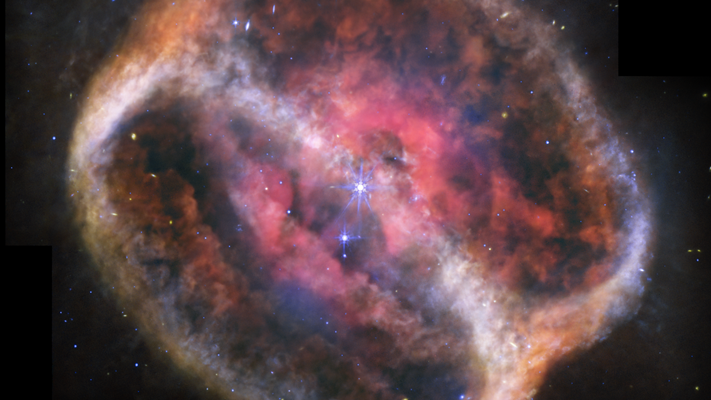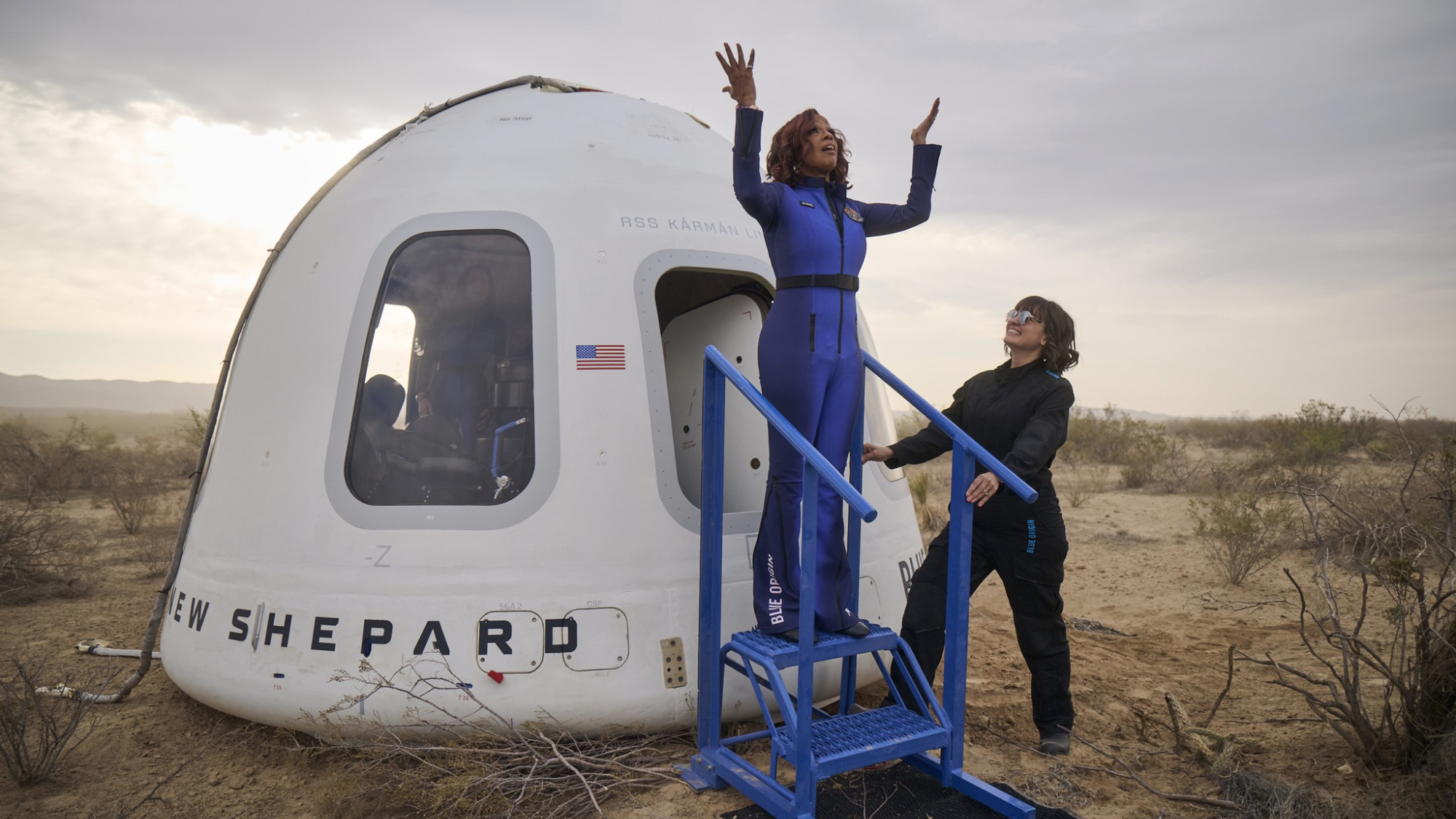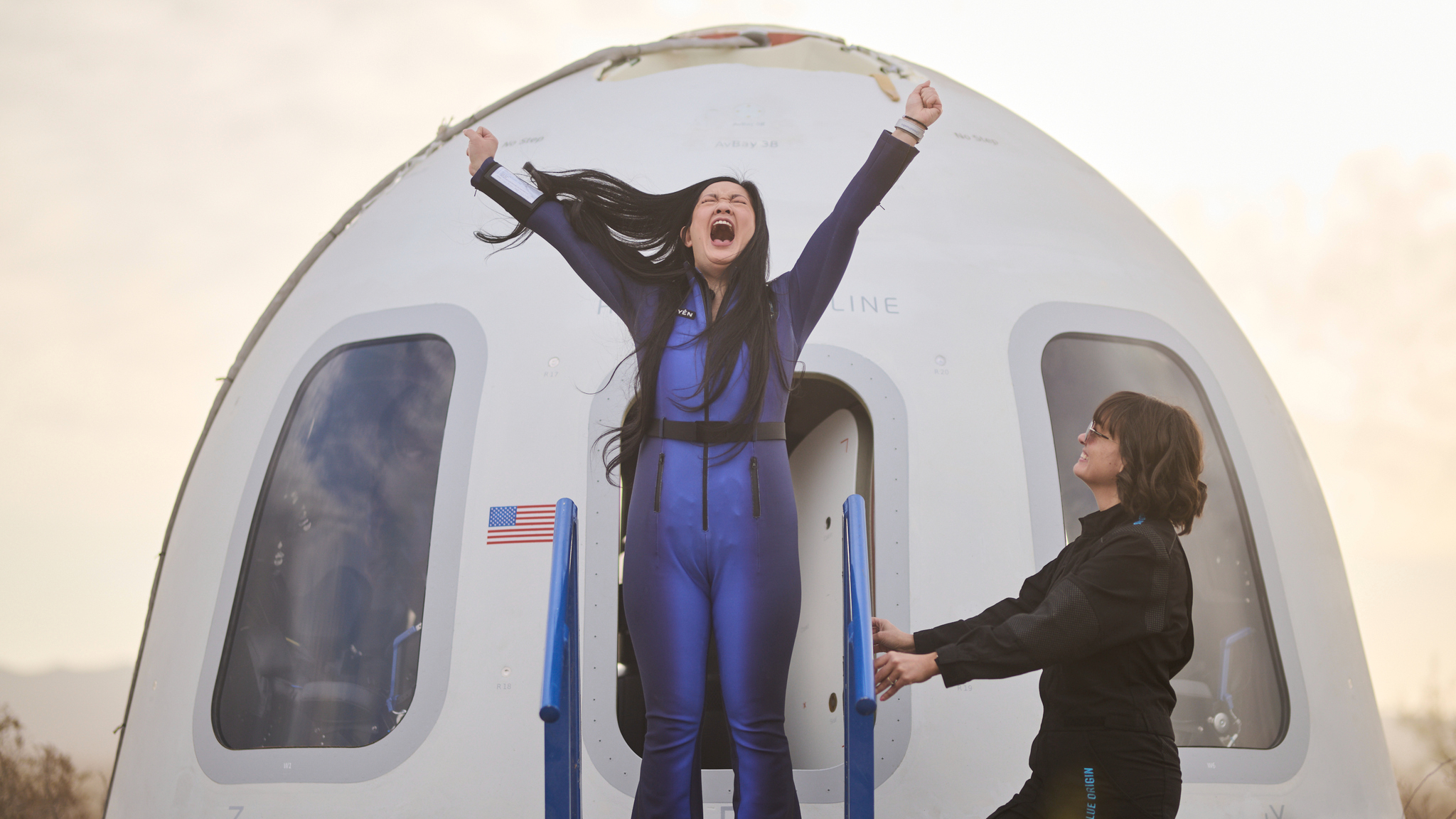SpaceX Polaris Dawn astronauts will conduct high-flying research in Earth orbit
The mission is about more than altitude records and a private spacewalk.

Update for 11 p.m. ET on Aug. 27: SpaceX has now delayed the Polaris Dawn launch until no earlier than Aug. 30 due to a helium leak and bad weather. Read our delay stories here and here.
Call it one high leap for astronaut science.
The Polaris Dawn mission, funded by billionaire entrepreneur Jared Isaacman, is scheduled to launch on a SpaceX Falcon 9 rocket no earlier than Tuesday morning (Aug. 27). It has two major operations goals: to perform the first-ever private spacewalk and to fly higher than any crewed spacecraft since the Apollo era, at about 870 miles (1,400 kilometers).
The four-person crew includes Isaacman as commander (who previously funded and commanded the private Inspiration4 orbital mission in 2021); pilot Scott "Kidd" Poteet, a business associate of Isaacman's across several companies; and mission specialists Sarah Gillis and Anna Menon, both of whom are SpaceX engineers.
Polaris Dawn also plans to conduct 40 science experiments, in partnership with 30 institutions worldwide, Menon told reporters during a press conference on Aug. 19. She said there are three categories: human health in areas such as bone density, vision and motion sickness; research about pressure changes to understand how the body reacts to higher-than-usual altitudes; and research undertaken on Earth to see how the astronauts readapt after a few days in space.
Related: How SpaceX's historic Polaris Dawn private spacewalk will work
The crew spent two days in a pressure chamber to test out techniques to make their work more efficient, and to prep for the usual fluid shifts in space that all astronauts encounter: Fluids tend to migrate into the upper body and face and away from the lower body, temporarily creating a "puffy face syndrome" among new arrivals to space.
Get the Space.com Newsletter
Breaking space news, the latest updates on rocket launches, skywatching events and more!
The Polaris Dawn astronauts have a set of high-tech gear to track how their bodies will adapt and evolve during their five-day space mission. One is a contact lens that "measures intraocular pressure for extended periods of time," Menon said, referring to changes in the internal pressure of the eye. "We can hope to better understand the mechanisms behind these eye changes; we look into a future where there are hundreds or thousands of people living in space for long durations of time, so it is only a matter of time before there is a medical emergency that requires intervention."
The astronauts will also use an endoscope, with a camera attached, that is designed to go into the nostril and examine the airway for inflammation or other factors that may induce "balance issues that astronauts face when they return to a gravity environment."
The astronauts, in fact, have already tested a tool to see how they react to balance issues: a testing device can shoot electricity "between the inner ears to simulate that disorientation and teach more rapid adaptation skills."
More details about the experiments and partners are available on the Polaris Dawn research page (click the logo of each partner to read details about sponsored experiments).
Join our Space Forums to keep talking space on the latest missions, night sky and more! And if you have a news tip, correction or comment, let us know at: community@space.com.

Elizabeth Howell (she/her), Ph.D., was a staff writer in the spaceflight channel between 2022 and 2024 specializing in Canadian space news. She was contributing writer for Space.com for 10 years from 2012 to 2024. Elizabeth's reporting includes multiple exclusives with the White House, leading world coverage about a lost-and-found space tomato on the International Space Station, witnessing five human spaceflight launches on two continents, flying parabolic, working inside a spacesuit, and participating in a simulated Mars mission. Her latest book, "Why Am I Taller?" (ECW Press, 2022) is co-written with astronaut Dave Williams.









